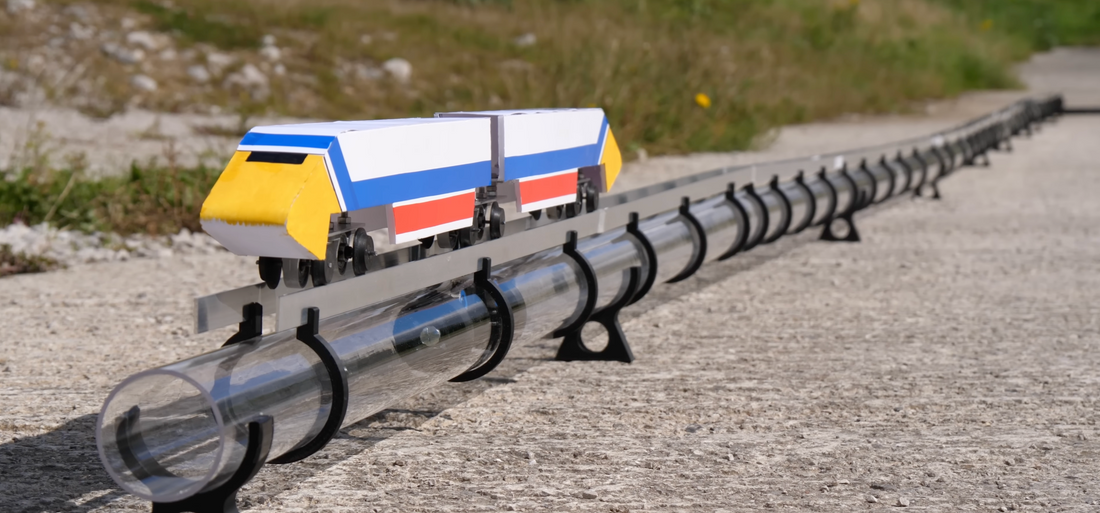I recently built a model train made from everyday items designed to break the scale soundbarrier... and it was quite tricky to get right!
I originally wanted to see how fast a scaled down train could go using pnumatics, which involved using an interesting system of a vacuum tube, piston and magnetic couplings to pull a train along using only air pressure.
Watch the full video about this project here.
This concept is actually a very old idea, but due to limitations in technology back in the 1800s, it never caught on in a big way. Turns out, though, that people are still playing around with the concept today.

As I still had many questions about the magnetic couplings, sealing the tube and how to control the trains, I travelled to the US to learn from the chaps at Flight Rail Corp in the hope that I they would share some of their secrets!

There we met John who was very kind to show us all over the Flight Rail facility, which is also a vineyard and let me have a close look at their 1/6th scale model train built to demonstrate what vacuum-powered trains can do.

The trains are operated using a remote control that actuates stationary air pumps along the track and can also apply the train’s brakes, although the trains can be atmospherically braked which, as you’ll see later, is a pretty cool side effect controlling your train with air.

Designing and building my Atmospheric Train.
Firstly, I needed to figure out how to create a vacuum tube for a train and some rails for a train to run along. For the tube, I thought about using PVC tubing but instead opted for clear acrylic so that I could see what was going on inside, and I also thought this would look cooler, which was an important factor. Then I got to work designing and 3D printing some supports that would hold the tubes up.

For the rails, I used some aluminium that would be spaced apart to run an 0 gauge size model train. This train is scaled to 1/48th scale, so to do a scale 100mph, it would have to travel just over 1m/s. Our target was over 700mph, however, so we’d need to build some more track later on, but this was a good start.
Instead of simply propelling any old 0 gauge carriages down the track, I wanted to build a custom high speed train from scratch, so started by assembling some wheels and axles from random components I had lying around. After this, I finished the train with a body to turn it into a proper train, not forgetting to add the names of my Patreons as a thanks for helping to supply the materials for this build.

Annoyingly, the 0 gauge wagon I’d used earlier worked much better than the custom made passenger cars, so maybe I should have just stuck with those.

Time to build a model hyperloop!
So the train was fast, but I’d had an idea of how I could take this to the next level. I’d discovered the thrust carriage alone was incredibly quick to travel down the tube untethered to a carriage above the rails, so I wanted to build a second train that would fit within the tube, turning the vacuum railway into a sort of hyperloop.

Results
As you might have seen from the video (go and watch it!), both trains ended up working really well. Perhaps there is a future in atmospheric trains, or maybe the simplicity and versatility of conventional trains will mean they'll be with us for a long time to come.
Many thanks to Flight Rail Corp for their help with this project. Onto the next one!



1 comment
WHICH VACCUM CLEANER USE IN THIS HYPERLOOF MODEL WHAT NAME OF MOTOR IN VACCUM CLEANER PLEASE TELL